Pazzi Conspiracy – Failed Murder Attempt On Lorenzo de’ Medici Made Him Even More Powerful And Threw Renaissance Florence Into Chaos
Ellen Lloyd - AncientPages.com - He who digs a pit for others falls in himself.' It is an old saying that has passed the test of time, and it is undoubtedly true in the case of the hideous murder attempt on Lorenzo de Medici.
Those who planned to murder Lorenzo de Medici failed, and by doing so, they threw Florence into chaos, but how could everything go so wrong?
Left: Lorenzo de' Medici. Image source - Right: Murder attempt on the Medici brothers. Image source
The Medici Family Did What They Thought Was Best – Not What Was Expected From Them
Scandals and intrigues were anticipated wherever members of the Medici family were present. Thanks to the powerful House of Medici, House of Borgia, and the Pazzi family, bribes, plots, and murder attempts were part of a daily schedule in Renaissance Florence.
The Renaissance was an intriguing period in Europe because the continent experienced a rebirth characterized by stunning intellectual and cultural achievements.
"It was a remarkable time that inspired people to admire and appreciate the beauty of art, literature, architecture, sculptures, and music.
During the Renaissance, some of the world's greatest artistic and architectural masterpieces were created in Italian cities such as Florence and Padua." 1
Countless contributions made by the Medici family are why historians credit the city-state of Florence as the place that started and developed the Italian Renaissance.
"The term Renaissance Godfathers describes the Medici family well.
The fact that the Medici family were bankers at heart gave them access to untold resources, which they used to obtain civic power over the city of Florence. As history tells us, they were not the only famous or powerful family of the Renaissance era, but they lasted the longest and ruled Florence for roughly 250 years."
Being so influential and powerful, it is no wonder the Medici family had enemies. Both the House of Borgia and the Pazzi family "made accusations and treacherous acts against the Medici family, and all failed to be successful. They fell into ruin not long after their failures." 2
Members of the Medici family were often strong-minded and made decisions that the Church or politicians did not appreciate. The Medici family did not hesitate to refuse financial help if they considered the Pope or a stateman was making a mistake.
For example, Cosimo di Giovanni de Medici, who was not only a successful banker but also a man who loved books, art, and culture, was exiled from Florence because he refused to support Rinaldo degli Albizzi (1370–1442) in a war against Lucca and Milano.
Florence became a Renaissance metropolis thanks to the contributions of Lorenzo de' Medici. Credit: Adobe Stock - davy_and_the_world
By not always playing by the rules, the Medici occasionally got into serious trouble. Still, they followed their principles, and their stubbornness was an issue the Pope could not always handle. It does not imply all of the Medici members were honest people. On the contrary, the Medici sometimes misused their power and money to get what they wanted.
Lorenzo di Piero de' Medici Was The Most Powerful Patron Of Renaissance Culture
Among all the Medicis, there is no doubt that the most famous member who ruled during the Golden Age of Florence was Lorenzo di Piero de' Medici. No one contributed as much as he did to raise awareness of the importance of art and culture, and he was responsible for putting Florence on the artistic map.
Born in Florence on January I, 1149, Lorenzo di Piero de' Medici was the son of Piero de' Medici and Lucrezia Tornabuoni. As a young boy, Lorenzo received the best possible education one could get at the time. He studied Greek, Latin, and philosophy. He was sent to the Platonic Academy of Marsilio Ficino, where he learned to sing and play various musical instruments. The young Lorenzo came to love poetry and literature, two interests that followed him for the rest of his life. He attended meetings with statemen and wrote poetry in his spare time. He was only 16 years old when he entered the world of politics.
Lorenzo de Medici was an intellectual man who enjoyed expanding his horizons, always eager to learn more. Clarice Orsini's marriage allowed him to establish valuable contacts with one of Rome's most influential and noble families.
When his father died, he came to power and ruled Florence along with his brother Guiliano Upon. He was only 20 years old at the time.
Attempt To Murder Lorenzo de' Medici And His Brother During A Mass
Just like his grandfather Cosimo de Medici, known as Cosimo the Elder, and father, Piero de Medici, Lorenzo was determined to use constitutional methods as much as possible and rule from behind the scenes without holding a public office.
Statue of Lorenzo de Medici in Uffizi Colonnade, Florence. Credit: Adobe Stock - jorisvo
Everything went well for Lorenzo, and he gained peoples' trust and respect by saving Florence from a feminine following a bad harvest. Later commonly referred to as Lorenzo the Magnificent, the young Medici man quickly rose to prominence.
In 1471 Francesco della Rovere was elected Pope. He became Pope Sixtus Sixtus IV, today remembered as the man who founded the Vatican Archives. Lorenzo de Medici did not hesitate to use his influence and power of persuasion when addressing the new Pope. He successfully reached an agreement with Pope Sixtus IV to handle papal finances. What more could a young man like Lorenzo de' Medici wish for at the beginning of his brilliant career?
The Pazzi family discovered an excellent opportunity to get rid of Lorenzo de Medici, whom they called the tyrant of Florence. Pope Sixtus IV wanted to buy Imola, and Lorenzo made it clear he would not provide the Pope with any money. All was going Lorenzo's way until he refused to finance the corrupt Pope's expansion of his papal territory.
A furious Pope Sixtus IV turned to the Pazzi bank in Rome, and Medici's rival was happy to offer the Church a loan. At this point, a plan to assassinate members of the Medici Family was born.
Pope Sixtus IV called Lorenzo de' Medici a "depraved and malignant spirit" and a "usurping tyrant." Naturally, the Pazzi family quickly allied with the Pope, and Florence was about to witness one of the most dramatic events that shook the Medici, the Church, the public, and the entire city.
Lorenzo made his life even more complicated when he "thwarted the Pope's efforts to appoint Francesco Salviati, an ally of the Pazzi, as archbishop of Pisa by refusing to acknowledge him. As a result, Pope Sixtus IV, his new nephew Girolamo Riario and Francesco Salviati entered a conspiracy with the Pazzi family to assassinate the Medici brothers.
The deadly plot was carried out during Easter mass on 26 April 1478 at the cathedral in Florence. Unable to reach Lorenzo through a locked door, the conspirators left the cathedral and attempted to capture the town hall.
A group of men fell on Guiliano de' Medici and stabbed him 19 times during the gathering. Lorenzo escaped with no life-threatening wounds and took sanctuary within the building. However, they were relentlessly pursued by an angry mob of Florentine citizens and killed – Salvaiot himself was hanged from the wall of the town hall." 3
After the failed assassination, Pope Sixtus IV retaliated and ordered the King of Naples to attack Florence. He also banned Lorenzo de Medici, which made priests in Florence furious. Soon Florentine priests responded by prohibiting the Pope, and chaos emerged. Lorenzo de Medici crushed Pope Sixtus IV's plans by surrendering to the king of Naples. By doing so, he became even more popular among the public, and in 1480 Lorenzo de' Medici managed to establish a peaceful relationship with Pope Sixtus IV.
Lorenzo the Magnificent was once again in control over his beloved city. All members of the Pazzi family were banished from Florence. Their property was confiscated, and anyone named Pazzi had to take a new name.
Lorenzo de Medici's contributions to art seemed endless, and they came at the cost of his family's fortune. However, his patronage of artists, writers, and architects had long-lasting benefits that are still visible to anyone who traveled to Florence to admire the city's cultural heritage.
Unfortunately, Lorenzo de' Medici had bad health and died in 1492 at only 43.
Written by Ellen Lloyd - AncientPages.com
Updated on January 26, 2023
Copyright © AncientPages.com All rights reserved. This material may not be published, broadcast, rewritten or redistributed in whole or part without the express written permission of AncientPages.com
Expand for references- Conny Waters - How Did The Renaissance Change Europe? AncientPages.com
- David Tee - Medici Family – Powerful Renaissance Godfathers And Patrons Of Galileo Galilei, AncientPages.com
- All About History Book of Medici -1st Edition
More From Ancient Pages
-
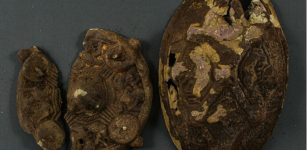 Family Looking For Lost Gold Ring Finds Viking Age Artifacts In Their Garden On The Island Of Jomfruland
Archaeology | Sep 30, 2023
Family Looking For Lost Gold Ring Finds Viking Age Artifacts In Their Garden On The Island Of Jomfruland
Archaeology | Sep 30, 2023 -
 Ancient Maya Reservoirs Can Solve Today’s Water Crises – Scientists Say
Archaeology | Oct 10, 2023
Ancient Maya Reservoirs Can Solve Today’s Water Crises – Scientists Say
Archaeology | Oct 10, 2023 -
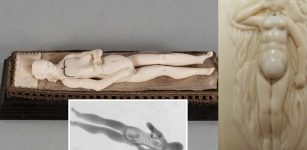 Secrets Of Ancient Ivory Manikins Revealed
Archaeology | Nov 28, 2019
Secrets Of Ancient Ivory Manikins Revealed
Archaeology | Nov 28, 2019 -
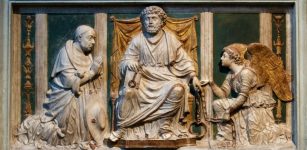 Nicholas Of Cusa – A Medieval Scholar And Mystic With Highly Unorthodox Ideas
Featured Stories | Aug 13, 2021
Nicholas Of Cusa – A Medieval Scholar And Mystic With Highly Unorthodox Ideas
Featured Stories | Aug 13, 2021 -
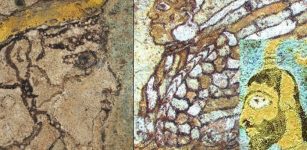 2,000-Year-Old Smuggled Glazed Bricks Sent Back To Iran By Switzerland
Artifacts | Dec 29, 2020
2,000-Year-Old Smuggled Glazed Bricks Sent Back To Iran By Switzerland
Artifacts | Dec 29, 2020 -
 Pharaoh Apries – Was The Betrayed Egyptian King Murdered By His Own People?
Featured Stories | Jun 30, 2021
Pharaoh Apries – Was The Betrayed Egyptian King Murdered By His Own People?
Featured Stories | Jun 30, 2021 -
 Food Insecurity Led To An International Conflict 2,000 Years Ago
Archaeology | Sep 22, 2022
Food Insecurity Led To An International Conflict 2,000 Years Ago
Archaeology | Sep 22, 2022 -
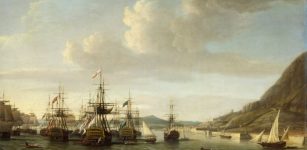 On This Day In History: Great Siege Of Gibraltar Begins – On June 16, 1779
News | Jun 16, 2016
On This Day In History: Great Siege Of Gibraltar Begins – On June 16, 1779
News | Jun 16, 2016 -
 Draugr – Vikings Feared This Ugly Living Dead With Prophetic Visions
Featured Stories | May 24, 2020
Draugr – Vikings Feared This Ugly Living Dead With Prophetic Visions
Featured Stories | May 24, 2020 -
 Nazar Amulet – Blue Color Wards Off The Evil Eye According To Ancient Belief
Ancient Symbols | Mar 13, 2018
Nazar Amulet – Blue Color Wards Off The Evil Eye According To Ancient Belief
Ancient Symbols | Mar 13, 2018 -
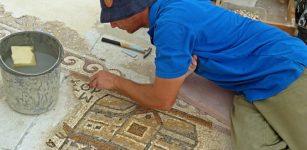 A Rare 1,500 Year Old Mosaic That Depicts Ancient Streets And Buildings in Egypt – Discovered
News | Sep 29, 2015
A Rare 1,500 Year Old Mosaic That Depicts Ancient Streets And Buildings in Egypt – Discovered
News | Sep 29, 2015 -
 Infamous End Of Lugalzagesi – Ambitious King Who United Sumer
Featured Stories | Apr 30, 2020
Infamous End Of Lugalzagesi – Ambitious King Who United Sumer
Featured Stories | Apr 30, 2020 -
 Ancient Secrets Of Sacred Towers And Stone Circles In Colorado Where Spirits Of Native Americans Still Live
Civilizations | Mar 19, 2017
Ancient Secrets Of Sacred Towers And Stone Circles In Colorado Where Spirits Of Native Americans Still Live
Civilizations | Mar 19, 2017 -
 Rare Pictish Symbol Stone Found Near The Battle Of Nechtansmere Site
Archaeology | Mar 7, 2022
Rare Pictish Symbol Stone Found Near The Battle Of Nechtansmere Site
Archaeology | Mar 7, 2022 -
 Mysterious Time Slips Near An Ancient Church – Reported
Featured Stories | Oct 23, 2018
Mysterious Time Slips Near An Ancient Church – Reported
Featured Stories | Oct 23, 2018 -
 Different Story Of Odin’s Sons Balder And Hoder In Norse Mythology
Featured Stories | Nov 26, 2020
Different Story Of Odin’s Sons Balder And Hoder In Norse Mythology
Featured Stories | Nov 26, 2020 -
 On This Day In History: Amelia Earhart, Most Famous Female Pilot – Disappeared Over The Pacific Ocean – On July 2, 1937
News | Jul 2, 2016
On This Day In History: Amelia Earhart, Most Famous Female Pilot – Disappeared Over The Pacific Ocean – On July 2, 1937
News | Jul 2, 2016 -
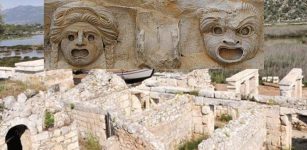 Ancient City Was Discovered Underground In Antalya’s Demre District
Archaeology | Nov 26, 2019
Ancient City Was Discovered Underground In Antalya’s Demre District
Archaeology | Nov 26, 2019 -
 Danger Lurking In The Woods – Unknown Force And Mysterious Lights – Part 1
Featured Stories | Jul 6, 2018
Danger Lurking In The Woods – Unknown Force And Mysterious Lights – Part 1
Featured Stories | Jul 6, 2018 -
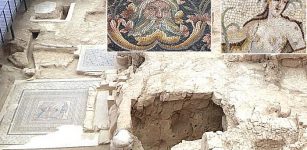 Rock-Cut Chambers In “House of Muses” Of Zeugma, Home To Numerous Mosaics
Archaeology | Jul 27, 2021
Rock-Cut Chambers In “House of Muses” Of Zeugma, Home To Numerous Mosaics
Archaeology | Jul 27, 2021

